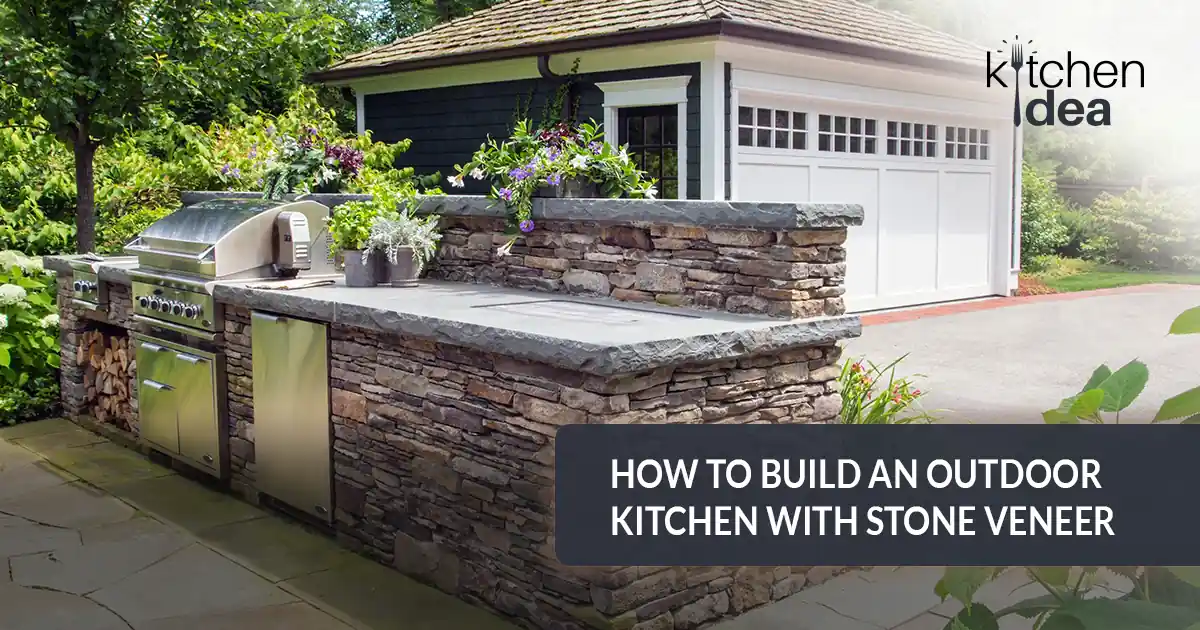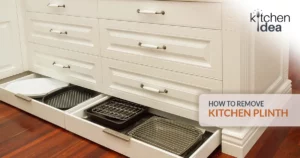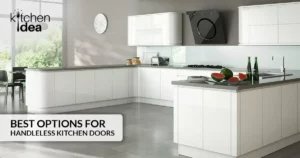An outdoor kitchen can instantly improve the aesthetics of your living space, and one of the best ways to build an Outdoor Kitchen with Stone Veneers. You have multiple options of stone to choose from and many options for stone patterns with your selected stone type, so you can customize your outdoor kitchen to your taste.
There are multiple ways to build an outdoor kitchen, but making one with Stone Veneer can be a perfect option because it is a low-maintenance option that does not require painting or sealing. On the other hand, natural stone is expensive and heavy and needs an experienced mason to build a kitchen. But with stone veneers, you can make an outdoor kitchen on your own.
Why Build an Outdoor Kitchen?
One of the benefits of planning an Outdoor Kitchen is it is cheaper compared to other options while also being comparatively low maintenance. In addition, with an Outdoor Kitchen, you can easily share a meal with your guests in your backyard.
Furthermore, you can be cooking on one side while your guests are relaxing on the other, which can be a better overall experience than having an indoor kitchen. Moreover, an outdoor kitchen made with a stone veneer can significantly improve your backyard’s aesthetics, as it blends well with any natural landscape.
You can easily make your Outdoor Kitchen with Stone Veneer following our guide, as we’ll go over the basic options of different building methods and the type of stones you can use.
Types of Stones for Outdoor Kitchen
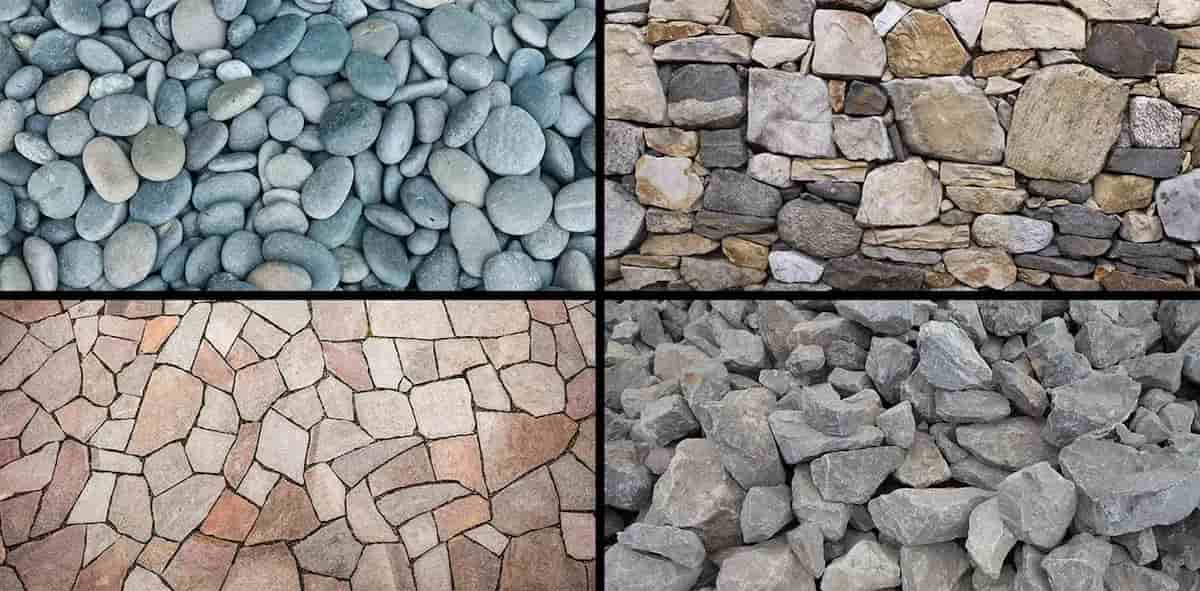
You have multiple options of stones to choose from while building your own outdoor kitchen. It depends on what kind of aesthetics you’re going for and availability of supplies.
Limestone
Limestone is a type of sedimentary stone that is mainly composed of calcium carbonate. Limestones are usually white or light gray and are extensively used for construction and landscaping. In addition, they are used for flooring, exterior/interior facings, and monuments.
They are usually shaped into blocks for outdoor kitchen building purposes so you can stack them easily. Furthermore, Limestones are also a common type of stone used for making kitchen countertops.
Fieldstone
Fieldstones are stones recovered from topsoil or subsoil of the Earth and usually are in a very natural and irregular shape. Their natural and erratic nature can be an excellent aesthetic feature for your outdoor kitchen, depending on what you’re building it for.
For example, a barbeque island made with Fieldstone will have a cobblestone look. However, if you have trouble finding Fieldstone in your area, you’ll have alternate manufactured options offering similar looks.
River Rock
River Rocks are mainly composed of either Basalt or Schist. River Rock is similar to Fieldstone with one core difference, and they are extracted from Rivers instead of Fields.
Furthermore, River Rocks will have a more polished look compared to Fieldstones, as you can see the mortar lines between the stones. So, it’s up to your taste as your kitchen would look very different with whichever choice you make.
Natural River Rock can also be very expensive and complicated to work with. Like with Fieldstones, you can choose to go with manufactured alternatives since they will cost less while being easier to work with.
Flagstone
Flagstones, similar to Fieldstones, are also a type of sedimentary stone and are mainly composed of feldspar and quartz. They are also split into layers and form a wide, flat surface.
Similar to all the types of stones mentioned above, flagstone will give your kitchen a completely different look compared to its counterparts. Flagstones are most commonly used in pathways, but you can also use them for building your kitchen.
If you plan to build your outdoor kitchen grill station with flagstone, there are multiple ways to manipulate it to create looks unique to your kitchen only.
Types of Stone Patterns to Use for Outdoor Kitchen
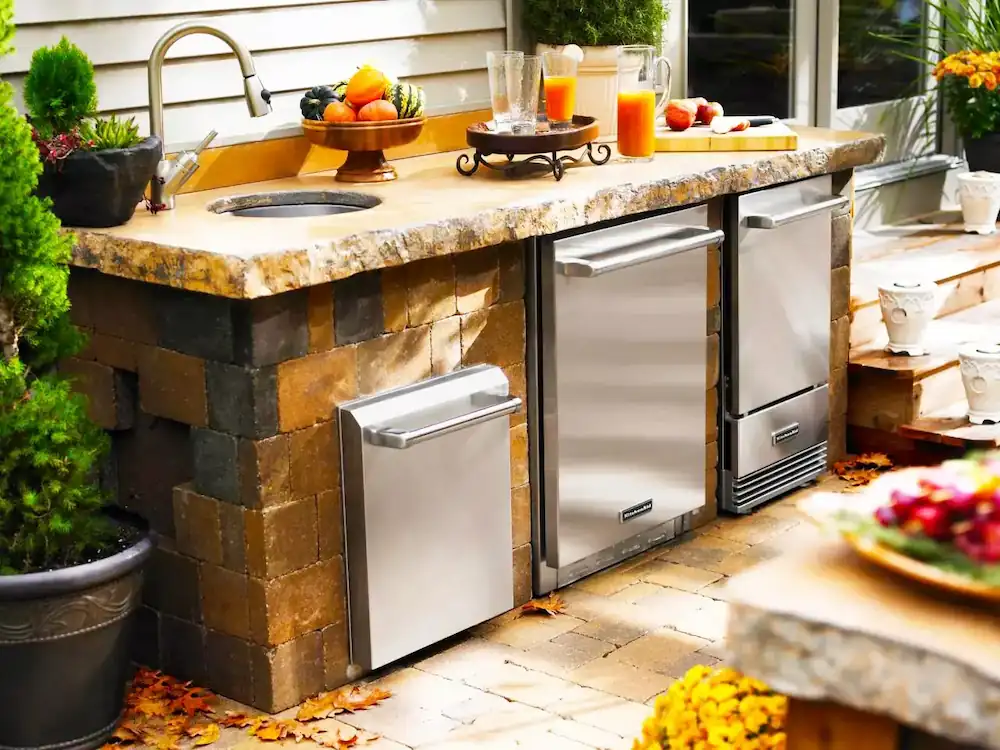
Once you decide on which type of stone you’d like to use for your outdoor kitchen setup, the next thing to choose is which pattern you want to go with. Again, there are multiple options to go with, and similar to stone types, they’ll help you customize the look of your kitchen to your taste.
Let’s look at the types of stone patterns you have on hand.
Stack Stone
Whichever stone type you choose, you can go with a stacked stone set up. With a stack stone setup, the mortar lines between stones can not be seen, and the stones are directly stacked above one another.
You can obtain Stack Stone from natural or manufactured (cultured) stone. Unfortunately, natural stack stones are in individual pieces, and you must assemble them yourself.
However, cultured stones come both in individual pieces and in paneled form. If you get them as separate pieces, you’ll have to assemble them like you would with natural stone. On the other hand, if you get them as panels, they’ll be in premade panels that you can directly assemble in your kitchen.
Ledge Stone
Ledge Stones are rectangular and stacked over one another like Stack Stones. However, unlike Stack Stones, the mortar lines between the stones can be seen.
Ledge Stones are stacked by one layer at a time and are a popular stone option for building outdoor kitchens. Compared to other alternatives, ledge stones are relatively easier to work with.
Ashlar
Finally, we have Ashlar stones that are evenly cut into squared edges by a mason.
Unlike Ledge Stones or Stack Stones, Ashlar stones are significantly more consistent in shape and size, meaning your outdoor kitchen will have a more consistent look.
Their uniform shape also means you can either stack identical stones on top of each other or stack nearly identical ones varying slightly from each other in dimension to customize the kitchen to your liking.
Ashlar stone is an excellent alternative to bricks while retaining a similar, more natural look.
The Build Process for Outdoor Kitchen with Stone Veneer
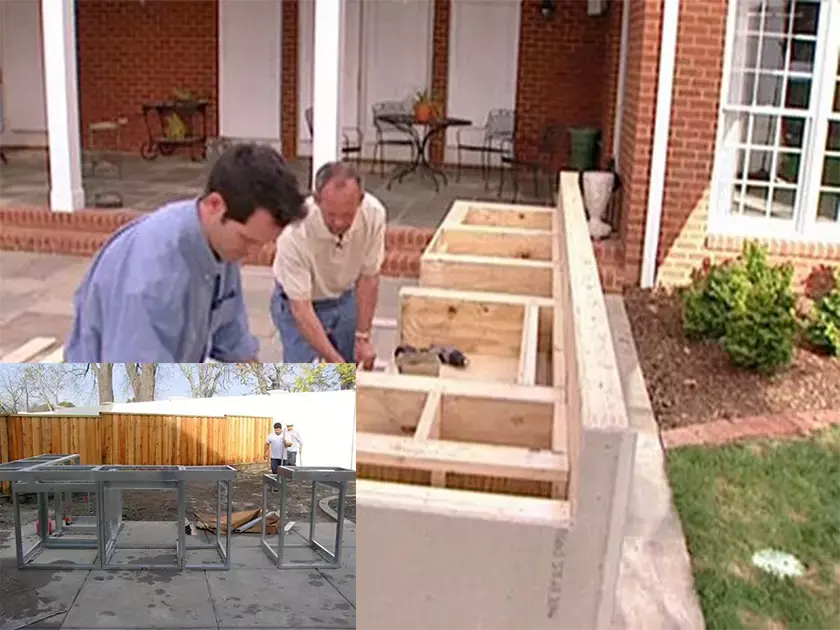
Now that you have picked your type of stone and set the pattern you’re going for, it’s time to build your outdoor kitchen with stone. Similar to stone types and patterns, you have multiple options here to go with. Let’s take a look at them.
Hand Laid Stone
Hand Laid Stone process takes the most expertise and knowledge among all the other alternatives and the longest. Therefore, we do not recommend this method if you’re building your outdoor kitchen with stone as a DIY project.
In this method, you must lay every stone piece by piece. Two different approaches to accomplish this process are wet-laid and dry. If you use a wet-laid method, your stonemason will use mortar to hold the stones together. On the other hand, in the dry method, there isn’t anything adhering the stones together; they are just stacked on top of and around each other.
If you want your kitchen job appropriately done with this method, there isn’t any alternative to hiring an expert stonemason since the process is long and complex.
If you plan to hire a stonemason, you can certainly go with this method, as this will create a natural look for your kitchen.
Stone Mortared into CMU (Concrete Masonry Unit) Substrate
In this method, you’ll adhere the stones using mortar to a CMU. The substrates in CMU are made with concrete blocks in different shapes. And from there, the stonemason will adhere your stones to it.
This method, similar to the previous one, is also better if done by an expert. However, it is also more costly since you have the added cost of buying a CMU unit and having to pay for a stonemason.
Natural Stone Outdoor Kitchen Veneer
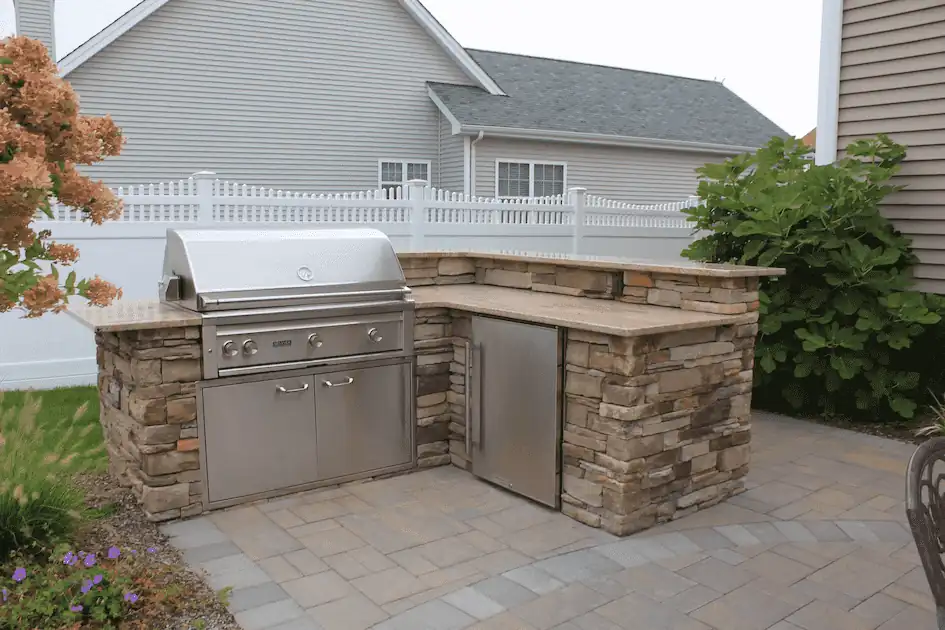
Natural Stone Veneer is one of the best options for building your outdoor kitchen station.
Firstly you have to make the frame on which you’ll then build the kitchen station, and you can use wood, metal, or concrete to build the frame. Metal is the most common go-to option.
After that, you need to adhere a cement board to the frame. Finally, you have to attach each course to the frame. There are two ways you can adhere stones: mortar or masonry adhesive.
Using mortar is complicated compared to masonry adhesive but is more secure. You’ll have to carefully and mindfully place the stones over the scratch coat with mortar.
On the other hand, the masonry adhesive method is slightly more accessible as it acts just like glue. However, if you live in a relatively cold/freezing climate, you shouldn’t use this method, as moisture can cause stones to pop off.
Cultured Stone Outdoor Kitchen Veneer
Making your kitchen station with cultured stone veneer is similar to making it with natural stone veneer. As written above, the primary difference is cultured stone is manufactured.
However, adhering and applying stone to the frame is identical to the method you must follow for natural stone veneer.
But in the case of a cultured stone veneer kitchen, you also have the option to purchase stone veneer panels. Of course, it will add to the cost of building your kitchen, but it can be worth it since it makes the job easier.
If you choose to go with stone veneer panels, you’ll find multiple stone pieces already pre-adhered to the panel, and you’ll then be able to apply single or multiple panels directly to the cement board and then work over it.
Similar to natural stone veneer, it is also an excellent DIY method. However, hiring a stonemason would have better results.
The Pros and Cons
Hand Laid Stone
Pros
- Hand Laid Stone outdoor kitchen is one of the best looking ones.
- A hand-laid stone kitchen would also offer a very old-school feel.
Cons
- The Hand Laid Stone method would cost you a fortune.
- You’ll have limited storage space in your kitchen.
Stone Mortared into CMU Substrate
Pros
- Relatively Cheaper while offering a natural look like the Hand Laid Stone method.
- Very stable method since you’ll be building it using a cement frame.
Cons
- While cheaper than the Hand Laid method, this would still be expensive.
- Limited Cavity Space – more than the Hand Laid system but less than the Veneer method.
- Limited or nearly impossible options for repair and maintenance.
Natural Stone Outdoor Kitchen Veneer
Pros
- It’s DIY friendly – it’s possible to build this outdoor kitchen yourself.
- Comparatively cheaper compared to hand-laid methods.
- Nature stone aesthetic with less effort.
Cons
- Sourcing natural stone can be costly.
- Vulnerable to damage in colder climates with freeze and thaw cycles.
Cultured Stone Outdoor Kitchen Veneer
Pros
- Cheaper compared to natural stone.
- Similar to Natural Stone Veneer, this is also a DIY-friendly option.
- Cultured stones are available in many shapes and forms, so you can customize your kitchen to your taste.
Cons
- Vulnerable in colder climates if masonry adhesive was used.
Which Stone Veneer Would Be Best For Your Kitchen?
It depends on you! All stone types have their pros and cons and are different aesthetically.
One of the crucial things to consider is your budget for your project. If budget is of no issue and you prefer a natural old-school look, you can use the Hand Laid or Stone Mortared in CMU methods with natural stones. However, as mentioned, this method will require an expert stonemason and is not DIY-friendly.
On the other hand, if you want an excellent outdoor kitchen built from scratch, you can go with Cultured or Natural Stone Veneers. Natural Stone Veneer would still cost you a lot, with a majority of the expenses on sourcing the stones. Cultured Stone Veneer would be an excellent inexpensive, while highly-customized alternative.
FAQ
How much does it cost to build an outdoor kitchen with stone veneer?
Depending on your chosen specifics, the total cost can range from $5057 (£4470) to $15726 (£15,270). However, if you decide to go with natural stones with high-end materials and procedures, the cost may exceed over $40,750 (£36,019) and has no upper limit.
What stone should I use for the outdoor kitchen?
It also comes down to your taste and budget. Natural Stone setups will cost more than Cultured Stone setups. Likewise, the Type of Stone you want, from Limestone, River Rock, Fieldstone, or Flagstone, comes down to your taste, as your setup will look very different depending on your choice.
Final Thought
An Outdoor Kitchen made with Stone Veneer can add character and aesthetic value to your backyard while providing a space to cook and host parties with your friends and family. You can choose many options and customization options, building your kitchen according to your taste.
It will be a good, long-term investment that will pay off for years, so follow our guide to pick whichever option is best for you.

